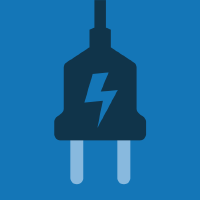Topic Menu
► Topic MenuTopic Editors


Power System Protection
Topic Information
Dear Colleagues,
Power system protection has been a critical topic in research and the power industry, as it reduces maintenance costs due to system failure, allows the power supply to continue feeding the parts of the system that are not affected by the fault, and ensures personnel safety. Power system protection can be discussed from various perspectives, such as: protection in high-voltage (HV) transmission networks, protection in low-voltage (LV) distribution networks, protection in communication services and cyber security, protection in modern power plants, protection in hybrid renewable energy systems, etc.
The present Topic aims to create a representative and updated collection of reviews or regular research articles on the challenges and developments associated with power system protection. The "Power System Protection" Topic includes, but is not limited to, the following areas:
- Transformer protection;
- The protection of synchronous generators;
- Transmission line protection;
- Digital and adaptive relaying;
- Protective devices, systems, and technologies;
- Types of protection;
- High-voltage transmission network protection;
- Overcurrent relay;
- Distance (impedance relay);
- Earth fault;
- Arc flash;
- Low-voltage networks protection;
- Disturbance-monitoring;
- Micro-grids and islanded networks protection;
- Grid codes and policy/legislative issues that may impact protection;
- Protection of energy storage and novel loads;
- Protection against network instability and low inertia;
- Protection of conventional and renewable generation and grid interconnections;
- Fault detection and localisation techniques;
- New protection algorithms and software solutions;
- Design and application of substation communications and integrated systems;
- Advanced signal processing techniques applied to protection systems;
- Multi-agent-based protection systems;
- Wide-area protection systems;
- Big data and cloud computing;
- Cyber security;
- Testing procedures and tools.
Dr. Seyed Morteza Alizadeh
Prof. Dr. Akhtar Kalam
Topic Editors
Keywords
- HV/LV protection
- earthing
- power quality
- information and communications technology
- fault detection
Participating Journals
| Journal Name | Impact Factor | CiteScore | Launched Year | First Decision (median) | APC |
|---|---|---|---|---|---|

Applied Sciences
|
2.5 | 5.5 | 2011 | 19.8 Days | CHF 2400 |

Electricity
|
1.8 | 5.1 | 2020 | 26 Days | CHF 1200 |

Electronics
|
2.6 | 6.1 | 2012 | 16.8 Days | CHF 2400 |

Energies
|
3.2 | 7.3 | 2008 | 16.2 Days | CHF 2600 |

Sensors
|
3.5 | 8.2 | 2001 | 19.7 Days | CHF 2600 |

Preprints.org is a multidisciplinary platform offering a preprint service designed to facilitate the early sharing of your research. It supports and empowers your research journey from the very beginning.
MDPI Topics is collaborating with Preprints.org and has established a direct connection between MDPI journals and the platform. Authors are encouraged to take advantage of this opportunity by posting their preprints at Preprints.org prior to publication:
- Share your research immediately: disseminate your ideas prior to publication and establish priority for your work.
- Safeguard your intellectual contribution: Protect your ideas with a time-stamped preprint that serves as proof of your research timeline.
- Boost visibility and impact: Increase the reach and influence of your research by making it accessible to a global audience.
- Gain early feedback: Receive valuable input and insights from peers before submitting to a journal.
- Ensure broad indexing: Web of Science (Preprint Citation Index), Google Scholar, Crossref, SHARE, PrePubMed, Scilit and Europe PMC.

